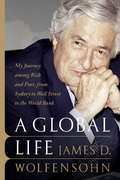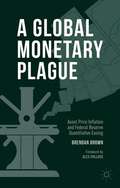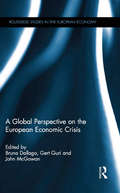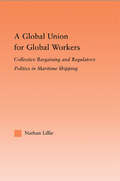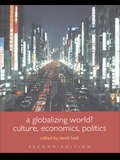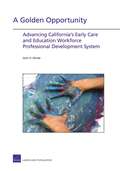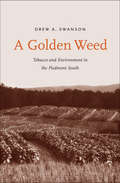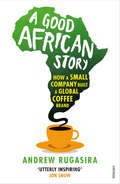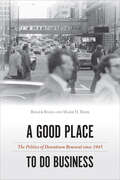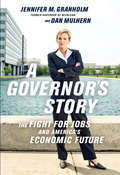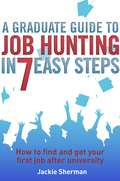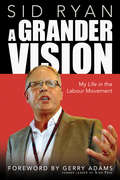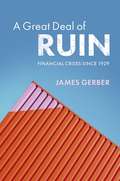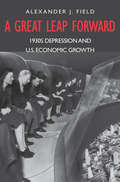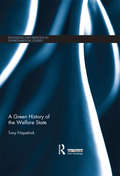- Table View
- List View
A Global Leader’s Guide to Managing Business Conduct
by Lynn S. Paine Joshua D. Margolis Rohit DeshpandeAn extensive global survey by three Harvard Business School professors finds that employees agree on core standards of corporate behavior. But meeting those standards will require new approaches to managing business conduct. The compliance and ethics programs of most companies today fall short of addressing multinationals' basic responsibilities, let alone such vexing issues as how to stay competitive in markets where rivals follow different rules. Companies must bring to the management of business conduct the same performance tools and concepts that they use to manage quality, innovation, and financial results.
A Global Lesson: Success Through Cooperation and Compassionate Leadership
by Reinhard Mohn Andrea StollA legendary entrepreneur and father of the global media giant Bertelsmann offers penetrating insights into his motives, beliefs, and hopes as one of the world's foremost businesspeople.
A Global Life: My Journey Among Rich and Poor, from Sydney to Wall Street to the World Bank
by James D. WolfensohnThe autobiography of the larger-than-life, visionary financier and humanitarian who led the World Bank through one of its most intense and tumultuous decades in the struggle against global poverty
A Global Monetary Plague: Asset Price Inflation And Federal Reserve Quantitative Easing
by Brendan BrownThe Great Monetary Experiment designed and administered by the Federal Reserve under the Obama Administration unleashed strong irrational forces in global asset markets. The result was a 'monetary plague' which has attacked and corrupted the vital signalling function of financial market prices.
A Global Perspective on the European Economic Crisis (Routledge Studies in the European Economy)
by Bruno Dallago, Gert Guri and John McGowanThe financial and economic crisis in Europe is not over, and the radically opposing strategies on how to proceed has only increased the complexity of problems in the region, revealing the shortcomings of the EU’s architecture. The European Union, perhaps for the first time in its history of more than seventy years, is being perceived as a threat to the financial and monetary stability of the world. A Global Perspective on the European Economic Crisis explores the connection between internal EU actions and institutions and the external factors that influence the ongoing response to the European crisis. With a unique collection of international and interdisciplinary essays, this book considers the complex macroeconomic and challenging political landscape of Europe, looking at how and why the European Union is untenable in its current state. The chapters outline what should be done to make the common currency area more resilient, and explain why external events are particularly problematic for the EU, ultimately offering suggestions for what Europeans should do in order to avoid harmful internal consequences. This volume confronts the causes of the crisis’ persistence, its economic and political consequences, and the impact of more recent events and policy decisions. It will be of interest to researchers and policy-makers keen to understand the EU relations and the influence of international organizations in the European economic crisis.
A Global Union for Global Workers: Collective Bargaining and Regulatory Politics in Maritime Shipping (Studies in International Relations)
by Nathan LillieThis is a book about how global unionism was born in the maritime shipping sector. It argues that the industrial structure of shipping, and specifically the interconnected nature of shipping production chains, facilitated the globalization of union bargaining strategy, and the transnationalization of union structures for mobilizing industrial action. This, in turn, led to global collective bargaining institutions and effective union participation in global regulatory politics. This study uses a variety of source and analytical techniques, relying heavily on interviews with union official and other maritime industry people in many countries.
A Globalizing World?: Culture, Economics, Politics (Understanding Social Change)
by David HeldToday's news media is full of references to 'globalization' - a buzz word that is quickly becoming ubiquitous. But what exactly is globalization? What are its main driving forces? Does it truly embrace all aspects of our lives, from economics to cultural developments? A Globalizing World? examines these and other key questions in a highly accessible fashion, offering a clear and intelligent guide to the big ideas and debates of our time. In doing so, it does not take one particular stance for or against globalizaton; rather, it examines the arguments and evidence about its nature, form and impact. After introducing the main theoretical positions of those who have studied the subject, key chapters look at the changing form of modern communication and cultural industries, trade patterns and financial flows of the world economy, and whether or not the 'new political world order' is qualitatively different from the old state system. This is essential reading for all students of politics, economics and international relations.
A Golden Opportunity: Advancing California's Early Care and Education Workforce Professional Development System
by Lynn A. KarolyThis study focuses on the education, training, and ongoing professional development of early care and education (ECE) caregivers, teachers, and administrators who work with infants, toddlers, andpreschool-age children from birth to kindergarten entry in California. It aims to provide a comprehensive assessment of the state's ECE workforce professional development system and a set of recommendations for improving the system's effectiveness.
A Golden Weed
by Dr Drew A. SwansonDrew A. Swanson has written an "environmental" history about a crop of great historical and economic significance: American tobacco. A preferred agricultural product for much of the South, the tobacco plant would ultimately degrade the land that nurtured it, but as the author provocatively argues, the choice of crop initially made perfect agrarian as well as financial sense for southern planters. Swanson, who brings to his narrative the experience of having grown up on a working Virginia tobacco farm, explores how one attempt at agricultural permanence went seriously awry. He weaves together social, agricultural, and cultural history of the Piedmont region and illustrates how ideas about race and landscape management became entangled under slavery and afterward. Challenging long-held perceptions, this innovative study examines not only the material relationships that connected crop, land, and people but also the justifications that encouraged tobacco farming in the region.
A Good African Story: How a Small Company Built a Global Coffee Brand
by Andrew RugasiraSince it was founded in 2003, Good African Coffee has helped thousands of farmers earn a decent living, send their children to school and escape a spiral of debt and dependence. Africa has received over $1 trillion in aid over the last fifty years and yet despite these huge inflows, the continent remains mired in poverty, disease and systemic corruption. In A Good African Story, as Andrew Rugasira recounts the very personal story of his company and the challenges that he has faced – and overcome – as an African entrepreneur, he provides a tantalising glimpse of what Africa could be, and argues that trade has achieved what years of aid have failed to deliver.This is a book about Africa taking its destiny in its own hands, and dictating the terms of its future.
A Good Call: Real World Strategies for Effective Teamwork, Managing Upward, and Work/Life Balance
by Jay Barney Patricia Gorman Clifford"What I Didn't Learn in Business School" is a fictional account that follows new consultant Justin Campbell as he joins an elite team hired by a chemical firm to assess the potential of a newly developed technology. In this chapter, Justin steps back to take stock of his individual contributions so far and his team's progress. As he reflects on the difficulties of being a new consultant, his role within the team comes into focus, and he begins to develop a clearer sense of both the value he brings to the work of strategy development, and where he stands relative to his boss's expectations. Authors Jay Barney and Trish Gorman Clifford present an invaluable opportunity to learn from Justin's mistakes and growth as he develops real-world strategies for assessing his value to the team, leveraging his team members' skills more effectively, and managing his boss. This chapter was originally published as Chapter 11 of "What I Didn't Learn in Business School: How Strategy Works in the Real World."
A Good Place to Do Business: The Politics of Downtown Renewal since 1945 (Urban Life, Landscape and Policy)
by Roger Biles Mark H. RoseThe “Pittsburgh Renaissance,” an urban renewal effort launched in the late 1940s, transformed the smoky rust belt city’s downtown. Working-class residents and people of color saw their neighborhoods cleared and replaced with upscale, white residents and with large corporations housed in massive skyscrapers. Pittsburgh’s Renaissance’s apparent success quickly became a model for several struggling industrial cities, including St. Louis, Cleveland, Detroit, Chicago, and Philadelphia. In A Good Place to Do Business, Roger Biles and Mark Rose chronicle these urban “makeovers” which promised increased tourism and fashionable shopping as well as the development of sports stadiums, convention centers, downtown parks, and more. They examine the politics of these government-funded redevelopment programs and show how city politics (and policymakers) often dictated the level of success. As city officials and business elites determined to reorganize their downtowns, a deeply racialized politics sacrificed neighborhoods and the livelihoods of those pushed out. Yet, as A Good Place to Do Business demonstrates, more often than not, costly efforts to bring about the hoped-for improvements failed to revitalize those cities, or even their downtowns.
A Government Out of Sight
by Brian BaloghWhile it is obvious that America's state and local governments were consistently active during the nineteenth century, a period dominated by laissez-faire, political historians of twentieth-century America have assumed that the national government did very little during this period. A Government Out of Sight, first published in 2009, challenges this premise, chronicling the ways in which the national government intervened powerfully in the lives of nineteenth-century Americans through the law, subsidies, and the use of third parties (including state and local governments), while avoiding bureaucracy. Americans have always turned to the national government - especially for economic development and expansion - and in the nineteenth century even those who argued for a small, nonintrusive central government demanded that the national government expand its authority to meet the nation's challenges. In revising our understanding of the ways in which Americans turned to the national government throughout this period, this study fundamentally alters our perspective on American political development in the twentieth century, shedding light on contemporary debates between progressives and conservatives about the proper size of government and government programs and subsidies that even today remain 'out of sight'.
A Governor's Story: The Fight for Jobs and America's Economic Future
by Jennifer Granholm Dan MulhernJennifer Granholm was the two-term governor of Michigan, a state synonymous with manufacturing during a financial crisis that threatened to put all AmericaOCOs major car companies into bankruptcy. The immediate and knock-on effects were catastrophic. GranholmOCOs grand plans for education reform, economic revitalization, clean energy, and infrastructure development were blitzed by a perfect economic storm. Granholm was a determined and undefeated governor, who enjoyed close access to the White House at critical moments (Granholm stood in for Sarah Palin during Joe BidenOCOs debate preparation), and her account offers a front row seat on the effects of the crisis. Ultimately, her story is a model of hope. She hauls Michigan towards unprecedented private-public partnerships, forged in the chaos of financial freefall, built on new technologies that promise to revolutionize not only the century-old auto industry but MichiganOCOs entire manufacturing base. They offer the potential for a remarkable recovery not just for her state, but for American industry nationwide.
A Graduate Guide to Job Hunting in Seven Easy Steps: How To Find Your First Job After University
by Jackie ShermanGetting a job can be hard if you are young and inexperienced, but there is a great deal you can do both before and after you leave university that will improve your chances. This book will show you how, despite all the difficulties and competing applicants you may face, you can still be the one to get the job you want. This book takes a seven step approach to introducing graduates to the analysis, preparation and application they will need in this competitive environment. It will help you decide what you want to do; plan how to get there; and help you use this knowledge to show that you are the best candidate for the job. Step 1: Discovering who you areStep 2: Deciding what to doStep 3: Finding out about workStep 4: Getting ready to applyStep 5: Making applicationsStep 6: Going for interviewsStep 7: Changing directionYou will also find ideas for earning a living, or spending time after university in unpaid but rewarding ways.
A Graduate Guide to Job Hunting in Seven Easy Steps: How to find your first job after university
by Jackie ShermanGetting a job can be hard if you are young and inexperienced, but there is a great deal you can do both before and after you leave university that will improve your chances. This book will show you how, despite all the difficulties and competing applicants you may face, you can still be the one to get the job you want. This book takes a seven step approach to introducing graduates to the analysis, preparation and application they will need in this competitive environment. It will help you decide what you want to do; plan how to get there; and help you use this knowledge to show that you are the best candidate for the job. Step 1: Discovering who you areStep 2: Deciding what to doStep 3: Finding out about workStep 4: Getting ready to applyStep 5: Making applicationsStep 6: Going for interviewsStep 7: Changing directionYou will also find ideas for earning a living, or spending time after university in unpaid but rewarding ways.
A Grand Success!: The Aardman Journey, One Frame at a Time
by David Sproxton Peter LordThe creators of Chicken Run and the Wallace & Gromit series share the inside story of their Oscar award-winning animation company.Aardman Animations was founded in 1972 by Peter Lord and David Sproxton. Joined by animator Nick Park in 1985, Aardman pioneered a quirky, lovable style of stop-motion animation and brought to life a string of unforgettable movies and television shows, including the highest-grossing stop-animated film of all time, Chicken Run.With A Grand Success!, Lord, Sproxton, and Park tell the 45-year history of Aardman. From their first short films, made on a lark on their kitchen table, to advertisements and music videos, A Grand Success! recounts the adventures and challenges of developing their own unique style, growing their business, working with famous actors, and conquering Hollywood, all while animating at 24 painstaking moves per second.
A Grander Vision: My Life in the Labour Movement
by Sid RyanA stirring, heartfelt manifesto written by a man who fervently believes in what workers with their civil society allies can achieve for the good of all. Sid Ryan, one of Canada’s most courageous and progressive union leaders, draws on the experience of his varied and colourful life to show what is right with the labour movement, what is wrong, and what has to change if it is to avoid becoming irrelevant. In A Grander Vision, Ryan calls for the adoption of social movement unionism, in which labour forges an alliance with other progressive elements in civil society, taking up the cause of young people, precarious workers, and immigrants. Ryan asserts that a renewed commitment to the NDP — the party that was built by unions — is necessary and that the Leap Manifesto should become the pillar of the movement in Canada.
A Great Deal of Ruin: Financial Crises since 1929
by James GerberA Great Deal of Ruin provides an accessible introduction to the enduring problem of financial crises. Illustrated with historical analysis, case studies, and clear economic concepts, this book explains in three parts what financial crises are, how they are caused and what we can learn from them. It begins with a taxonomy of crises and a list of factors that increase the risk for countries experiencing a financial crisis. It then examines five of the most important crises in modern economic history, beginning with the Great Depression and ending with the subprime crisis in the United States and its evolution into a debt crisis in the Eurozone. The book concludes with a set of lessons that can be learnt from the crises of the past. It will appeal to university students as well as general readers who are curious to learn more about the recent subprime crisis and other financial crises.
A Great Leap Forward: 1930s Depression and U.S. Economic Growth
by Alexander J. FieldThis bold re-examination of the history of U.S. economic growth is built around a novel claim, that productive capacity grew dramatically across the Depression years (1929-1941) and that this advance provided the foundation for the economic and military success of the United States during the Second World War as well as for the golden age (1948-1973) that followed. Alexander J. Field takes a fresh look at growth data and concludes that, behind a backdrop of double-digit unemployment, the 1930s actually experienced very high rates of technological and organizational innovation, fueled by the maturing of a privately funded research and development system and the government-funded build-out of the country's surface road infrastructure. This significant new volume in the Yale Series in Economic and Financial History invites new discussion of the causes and consequences of productivity growth over the last century and a half and on our current prospects.
A Great Place to Work For All: Better for Business, Better for People, Better for the World
by Michael C. Bush Great Place to WorkGreatness Redefined for the 21st CenturyToday's business climate is defined by speed, social technologies, and people's expectations of "values" besides value. As a result, leaders have to create an outstanding culture for all, no matter who they are or what they do for the organization. This groundbreaking book, from the creators of the gold-standard Fortune 100 Best Companies to Work For list, shows how it's done. Through inspiring stories and compelling research, the authors demonstrate that great places to work for all benefit the individuals working there and contribute to a better global society—even as they outperform in the stock market and grow revenue three times faster than less-inclusive rivals. This is a call to lead so that organizations develop every ounce of human potential.
A Green Forest Grows in Brooklyn: Joint Venturing with the Chinese
by Charles F WuMaryAnne Gilmartin, President and CEO of Forest City Ratner ("Forest City") was planning for yet another protracted discussion over the merits of a green roof for part of her $5 billion dollar new development in Brooklyn. While the low seven-figure cost overrun was to be "value-engineered" and in the scheme of things, this budgeted item was not going to impact the financial success of the project, it had become a heated source of contention. Was the debate symptomatic of something deeper that was amiss in the relationship?
A Green History of the Welfare State (Routledge Explorations in Environmental Studies)
by Tony FitzpatrickEnvironmental problems – particularly climate change – have become increasingly important to governments and social researchers in recent decades. Debates about their implications for social policies and welfare reforms are now moving towards centre stage. What has been missing from such debates is an account of the history of the welfare state in relation to environmental issues and green ideas. A Green History of the Welfare State fills this gap. How have the environmental and social policy agendas developed? To what extent have welfare systems been informed by the principles of environmental ethics and politics? How effective has the welfare state been at addressing environmental problems? How might the history of social policies be reimagined? With its lively, chronological narrative, this book provides answers to these questions. Through overviews of key periods, politicians and reforms the book weaves together a range of subjects into a new kind of historical tapestry, including: social policy, economics, party politics, government action and legislation, and environmental issues. This book will be a valuable resource for students and scholars of environmental policy and history, social and public policy, social history, sociology and politics.
A Greener House
by Richard Reed Sara WilkinsonHow green should you go? If you would like to make a positive impact on the environment but are concerned about the financial outlay, A Greener House is for you. Property experts Richard Reed and Sara Wilkinson will show you how to decide which sustainable measures are suited to your property, and evaluate the cost implications of installing them. You'll learn how to design a new home that exceeds the highest energy-efficiency ratings available, protect your property from obsolescence and outdating, and evaluate market trends in your neighbourhood. If you own property and would like to increase its value, you can't afford to ignore sustainability. This book will show you how to reduce your environmental footprint while making the most of your greatest financial asset. We all agree that we can't continue to consume the world's resources at the rate that we are now. We must start living more sustainably - and what better place to start than at home? Most of us want to play our part, but we're put off by financial concerns. But what if the cost of building or remodelling a greener house could be recovered in the value of your home when you sell?
A Guarded Life: My story of the dark side of An Garda Síochána
by Majella MoynihanA GARDA, A FORCED ADOPTION, A FIGHT FOR JUSTICEIn 1984, Majella Moynihan was a fresh-faced young garda recruit when she gave birth to a baby boy. Charged with breaching An Garda Síochána's disciplinary rules - for having premarital sex with another guard, becoming pregnant, and having a child - she was pressured to give up her baby for adoption, or face dismissal. It forced her into a decision that would have devastating impacts on her life. Majella left the force in 1998 after many difficult years and, in 2019, following an RTÉ documentary on her case, she received an apology from the Garda Commissioner and Minister for Justice for the ordeal she endured as a young garda. Here, for the first time, she tells the full story. From an institutional childhood after the death of her mother when she was a baby, to realising her vocation of becoming a guard only to confront the reality of a police culture steeped in misogyny and prejudice, A Guarded Life is both a courageous personal account of hope and resilience in the darkest times, and a striking reflection on womanhood and autonomy in modern Ireland.


